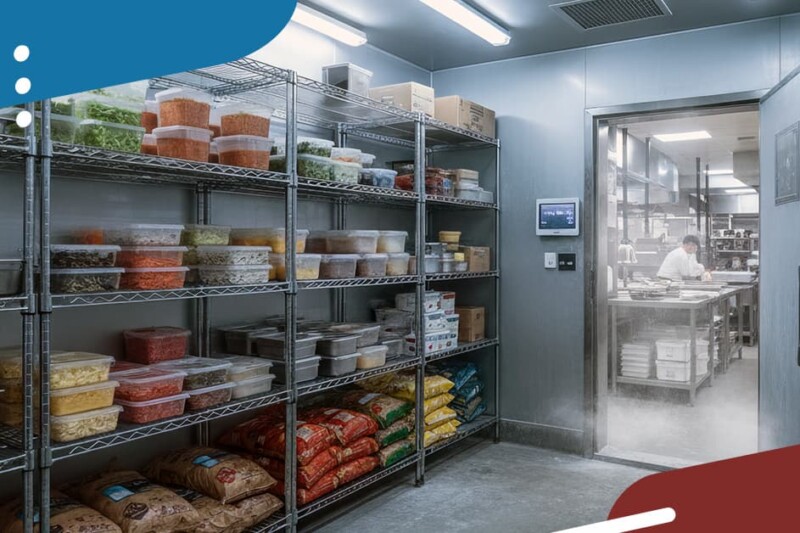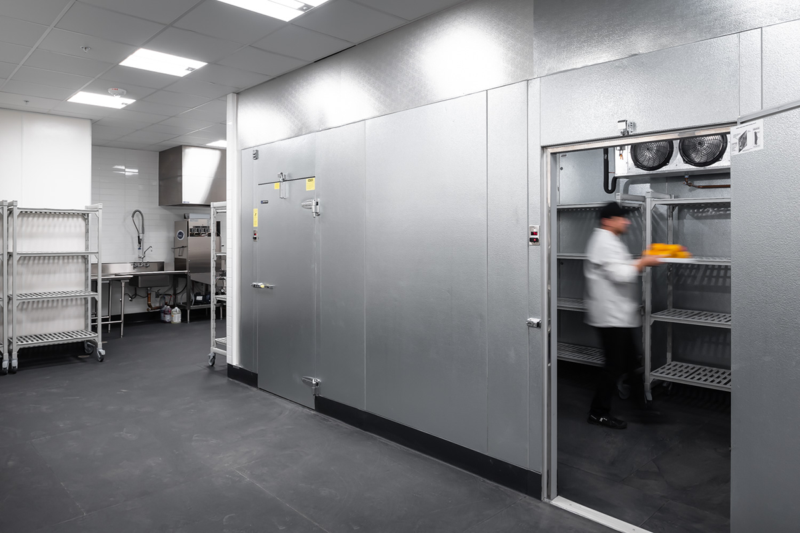Step Inside the Door-Type Dishmachines Category
Operators looking to specify a unit will find the category offers ventless capabilities, different wash performances and maintenance shortcuts.
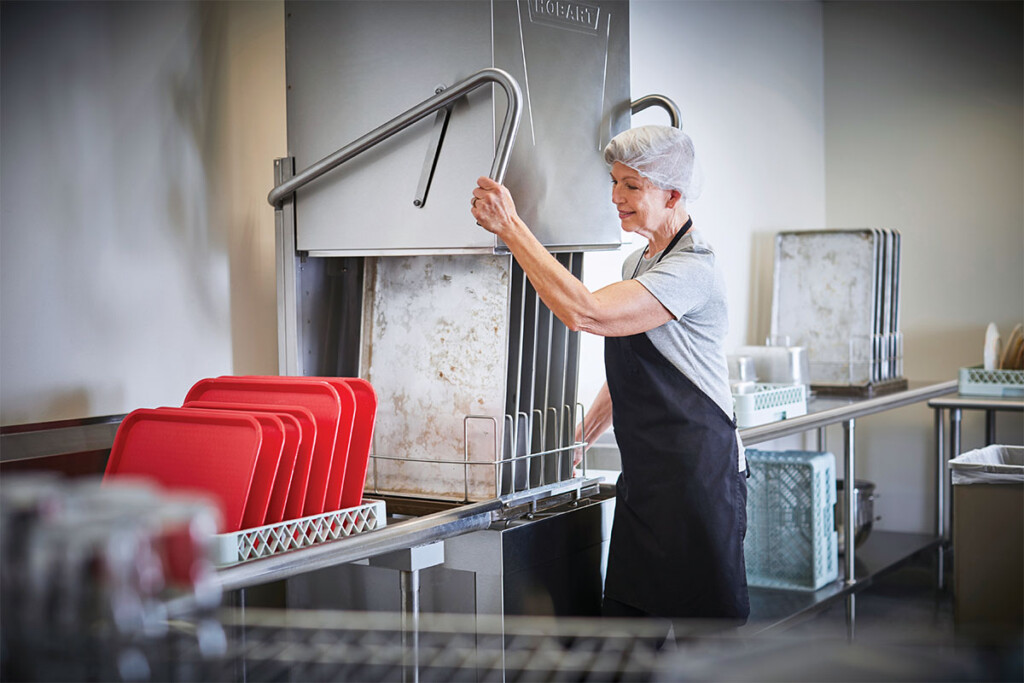
Dishmachines might not be gaining artificial intelligence or robotics as fast as cooking equipment, but they still boast smart features that tackle one super-important task: cleaning dishes.
Looking at door-type dishmachines in particular, the latest models tout ventless capabilities, serious wash performance and features that ease maintenance. Capacity-wise, door-types sit between undercounter dishmachines and rack-conveyor dishmachines. They’re ideal for operators who need to wash about 150 to 250 racks per day, with capacities of 40 to 60 racks per hour. One model processes as many as 80 racks per hour using a second wash chamber.
Most recently, the door-type category has shown upgrades to existing models. One model at The NAFEM Show in February sported an updated 4.3-inch display, listing condition alerts and multilingual, user-friendly operational guidance. The model also comes with enhanced visual onboard diagnostics, updated wash arms, an extended wash cycle and an automatic delime function.
Another model received minor updates, including more durable stainless buttons on the control panel versus membrane-style switches.
Operators looking to specify a door-type will want to make a couple big-picture decisions first, and then dig into what smart features matter most. Plus, thinking through the dishroom layout and the utilities available will ensure a smooth install.
From the Top
A couple high-level decisions include whether to go with a high- or low-temperature door-type, ventless or not and standard or tall size. Choosing between hot water or chemical sanitizing comes down to an operator’s preference, and each type has advantages and disadvantages. One manufacturer FER spoke with says that operators purchasing a dishmachine typically choose a high-temperature unit, and those leasing will go the low-temperature route.
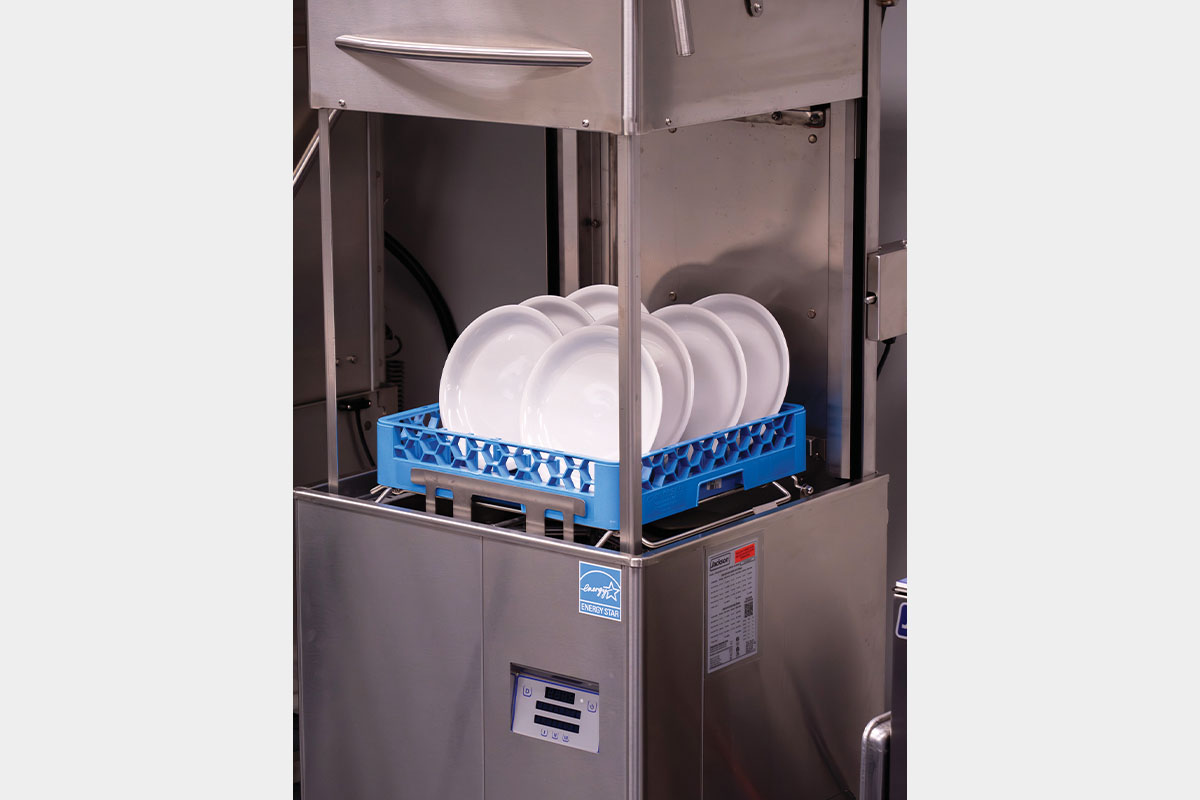
Energy Star rated dishmachines save businesses an average of $360 annually. Courtesy of Jackson.
High-temperature door-types require ventilation, but the category offers plenty of ventless units. Operators with existing ventilation might want to stick with a vented unit, whereas someone redesigning a dishroom or opening a new build could benefit from ventless, saving exhaust hood and installation costs.
At least one manufacturer has a slightly different takes on how it does ventless. Many ventless systems use cold water to condense steam. This maker’s system reads the temperature of the cold water and adjusts the timing of its vent cycle to ensure all the steam gets condensed. Fixed vent cycles are the alternative and, in warmer climates, might require a service agent to adjust the timing of the vent cycle to keep steam from escaping into the dishroom.
Operators who need to wash larger items, like sheet pans, will want a tall unit, which usually has a 27-inch opening.
Take a close look at the type of wares that employees will run through the door-type to decide on a standard or tall unit. A standard-height unit typically has a 17-inch opening, ideal for serving ware and smaller prep ware items. But anyone who needs to wash larger items, like sheet pans, will want a tall unit, which usually has a 27-inch opening.
Digging In
Beyond those first few main decisions, operators can get into the nitty-gritty details, such as wash performance, maintenance highlights and energy efficiency options. A few things to keep in mind include the following:
Not all models wash the same. While all models are NSF certified, only certain ones are NSF certified for pot-and-pan washing, meaning they can clean a tough level of food soil. Think baked-on cheeses and burnt grease. One model is NSF certified for pot-and-pan washing with its 2-, 4- and 6-minute cycles; another model has earned the rating with its roughly 11/2-, 21/3- and 41/2-minute cycles. Meanwhile, makers have different amounts of wash arms; more wash arms means more water movement.
Consider options that ease maintenance. Exactly no one has labor to spare; look for shortcuts. One maker offers a technology that alerts employees when it’s time to delime the unit and once prompted, automatically dispenses the delimer into the booster heater. This technology keeps employees from having to handle the delimer and ensures the cleaner runs through the booster heater, keeping it in working order. (In other situations, delimer might circulate throughout the machine but not reach the booster heater.) The same maker also points to its automatic soil remover, which pumps heavy food solids into an external scrap basket. Employees can pre-scrap less and the wash water stays cleaner longer.
Look for energy and water savings. Dishmachines are a cost center, and any feature that makes them more energy efficient is worth noting. Instead of onboarding a booster heater, one maker submerges it inside the wash tank, helping maintain water temperature while taking the load off the heating elements, helping to achieve Energy Star Version 3.0 specification for commercial dishwashers. Speaking of Energy Star, any dishmachine with the rating indicates there’s a minimum level of energy efficiency built in. Rated dishmachines (all types) save businesses an average of $360 annually and more than $3,290 on utility bills over their lifetime when compared with standard models.
Setting Up
Practically as important as configuring the door-type is organizing the dishroom where it will operate. Operators will want to pay close attention to the layout and utilities. Also, these machines will need a few accessories, like racks.
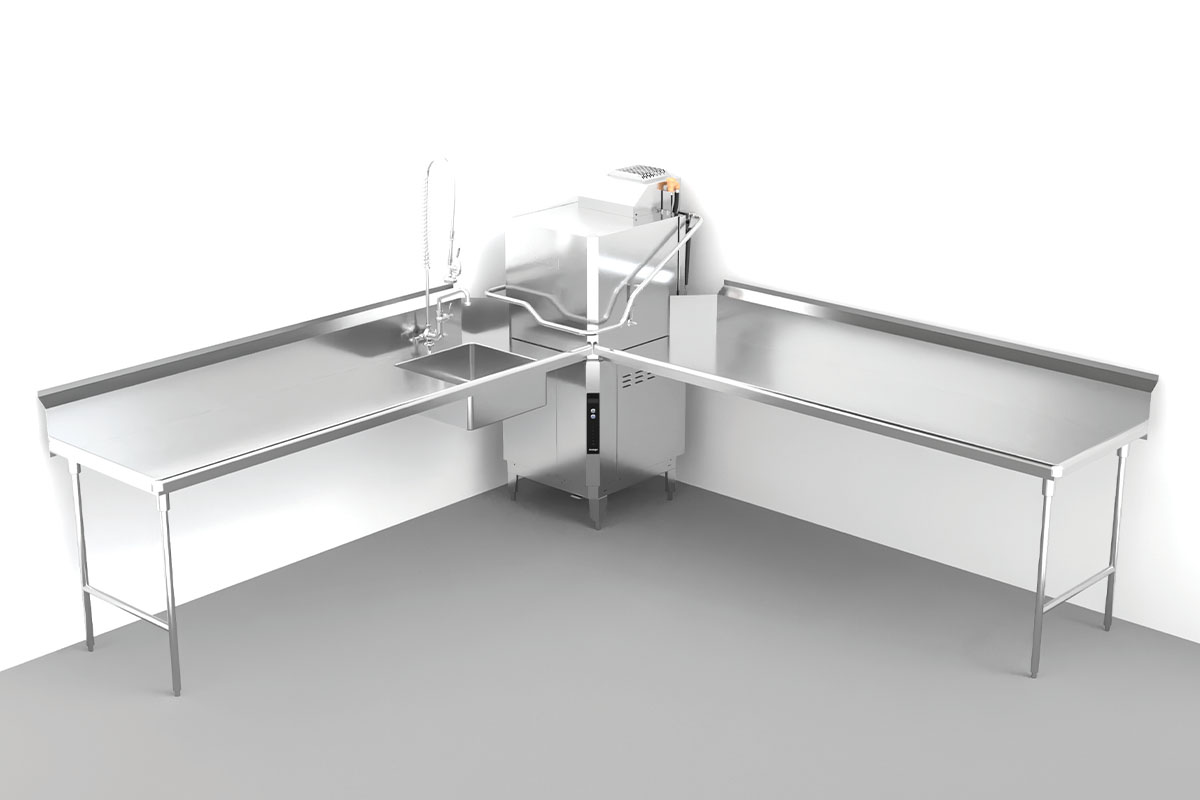
Dishroom layout is an important consideration. Courtesy of Insinger.
Operators can choose a straight pass-thru door-type, or situate it in a corner for a front-to-side design. (It takes minutes to update the door-type to either configuration.) On the soiled side, install a pre-rinse unit, of course, but also consider a hose reel, which will make it easy to clean the tables and the inside of the door-type. On the clean side, make sure there’s room for at least three racks to support a good workflow. If there’s room for only one rack, things will get inefficient quickly.
Note the height of the door-type, especially if it’s a tall unit, which can be more than 71/2-feet tall with the door open, and check it has enough clearance overhead. Make sure it can fit through doorways on install day.
Check the utilities in the dishroom. Door-types typically run on 208-240V. Hard water versus soft water means employees will need to delime the machine more often. One manufacturer recommends installing a water filtration system to help remove lime and scale, as well as a pressure-reducing valve to ensure the door-type functions correctly.
Finally, specify the right racks. Options range from full- to half-size racks; cup, plate and flatware racks; and tray and steam table pan racks.
Overall, when choosing a door-type, check out the manufacturer’s reputation as far as reliability and serviceability. Operators can talk to service agents and dealers they do business with the most and ask their opinions; it’s in their best interest to keep racks of clean dishes sliding out of the door-type.
Show Me the Money
Depending on the location of the install, an energy-efficient door-type dishmachine might qualify for a rebate, instant or mail-in. Visit Energy Star’s rebate finder at energystar.gov/rebate-finder to start.
Clean Team
Take a look at these door-type dishmachines, all high-temperature, when setting your equipment roster.
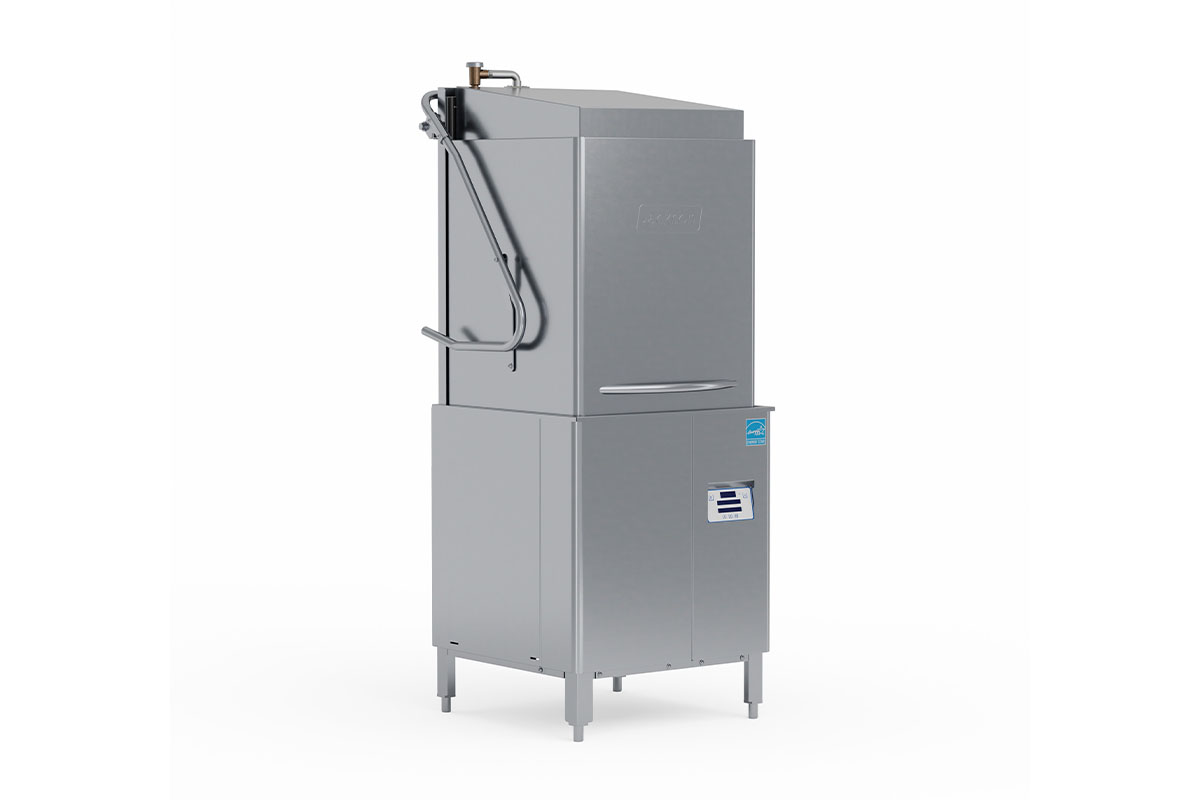
Jackson
Model: DynaStar HH-E VER
Capacity: 40 racks/hr.
Door Opening Height: 27 in.
Features: The ventless system on this unit automatically adjusts timing to ensure it condenses all steam. The unit earned NSF certification for pot-and-pan washing on all cycles, while the triple wash arms provide consistent, reliable wash performance.
Website: jacksonwws.com
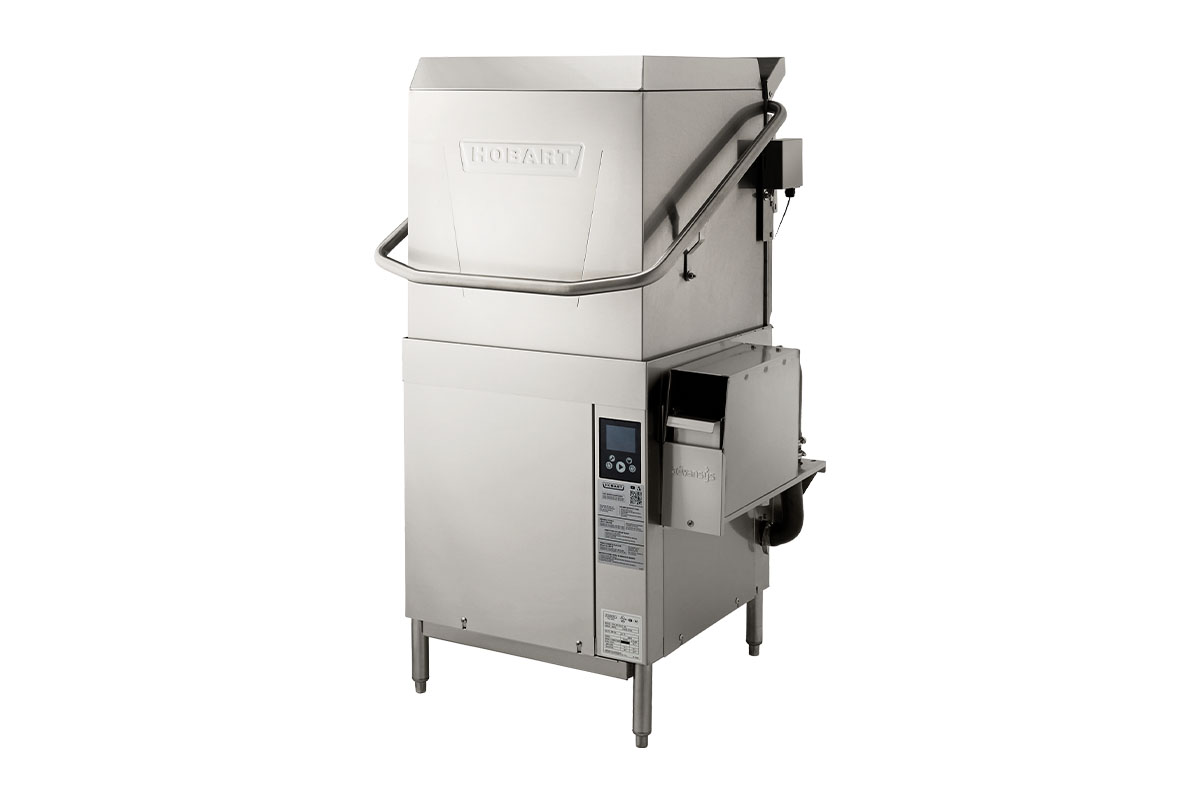
Hobart
Model: AM16VL-ADV Advansys Electric
Capacity: 40 racks/hr.
Door Opening Height: 17 in.
Features: The NSF pot-and-pan rating for 2-, 4- and 6-min. cycles on this ventless unit promises the cleaning of heavily soiled wares, while the complete delime with booster guard automatically dispenses delimer into the booster heater, easing maintenance.
Website: hobartcorp.com
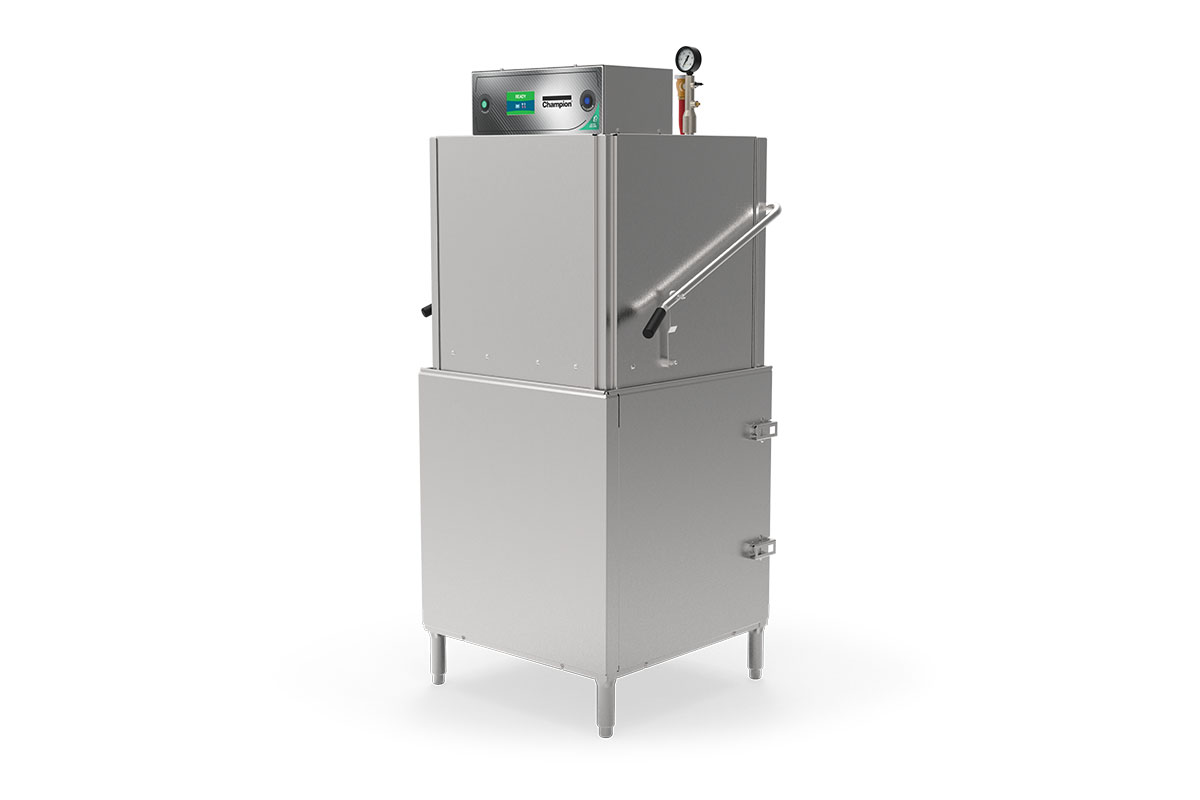
Champion
Model: DH3000
Capacity: 60 racks/hr.
Door Opening Height: 17 7/16 in.
Features: Updated in 2025, this model includes a 4.3-in. display that provides operational guidance and enhanced visual onboard diagnostics that quickly identify machine faults. An extended wash time of 16 min. provides maximum cleaning.
Website: championindustries.com
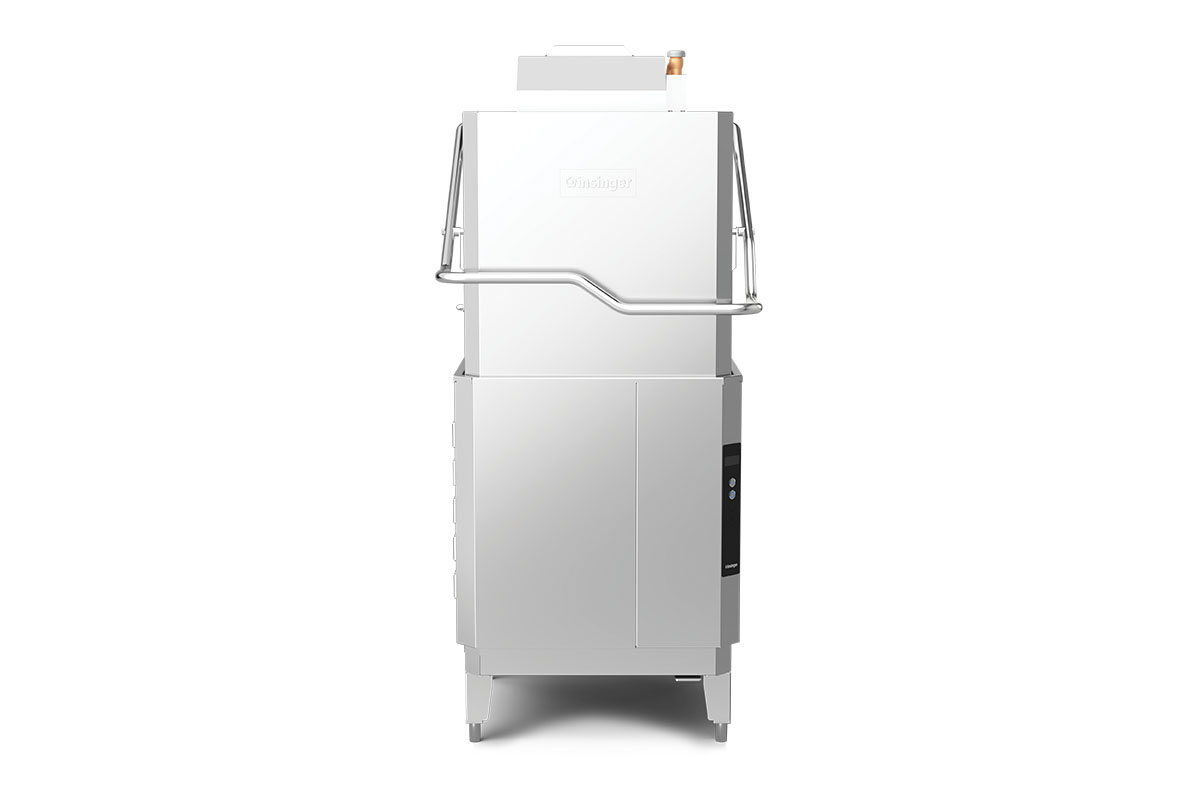
Insinger
Model: CX20VG
Capacity: 60 racks/hr.
Door Opening Height: 17 1/8 in.
Features: This low-profile ventless unit sports a submerged booster heater that helps it save energy by acting as an additional heating element inside the wash tank. A stainless button upgrade adds durability.
Website: insingermachine.com
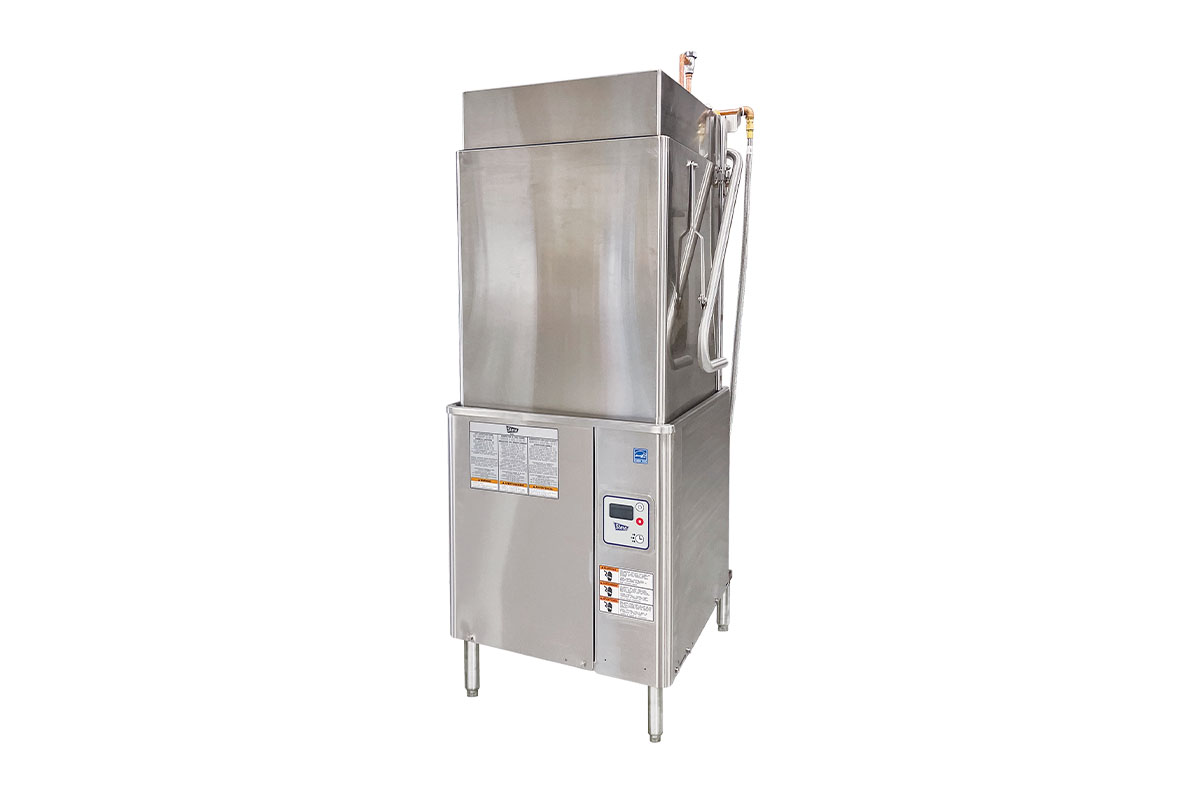
Stero
Model: SD3T
Capacity: 58 racks/hr.
Door Opening Height: 27 in.
Features: The tall door opening accommodates 18-in. x 26-in. sheet pans or a 60-qt. mixing bowl. NSF certification for pot-and-pan washing at 2- and 4-min. cycles provides extra cleaning power.
Website: stero.com
RELATED CONTENT
- Advertisement -
- Advertisement -
- Advertisement -
TRENDING NOW
- Advertisement -
- Advertisement -
- Advertisement -

